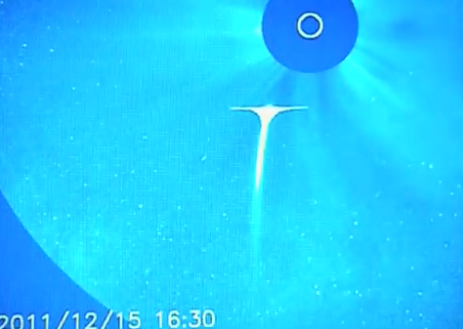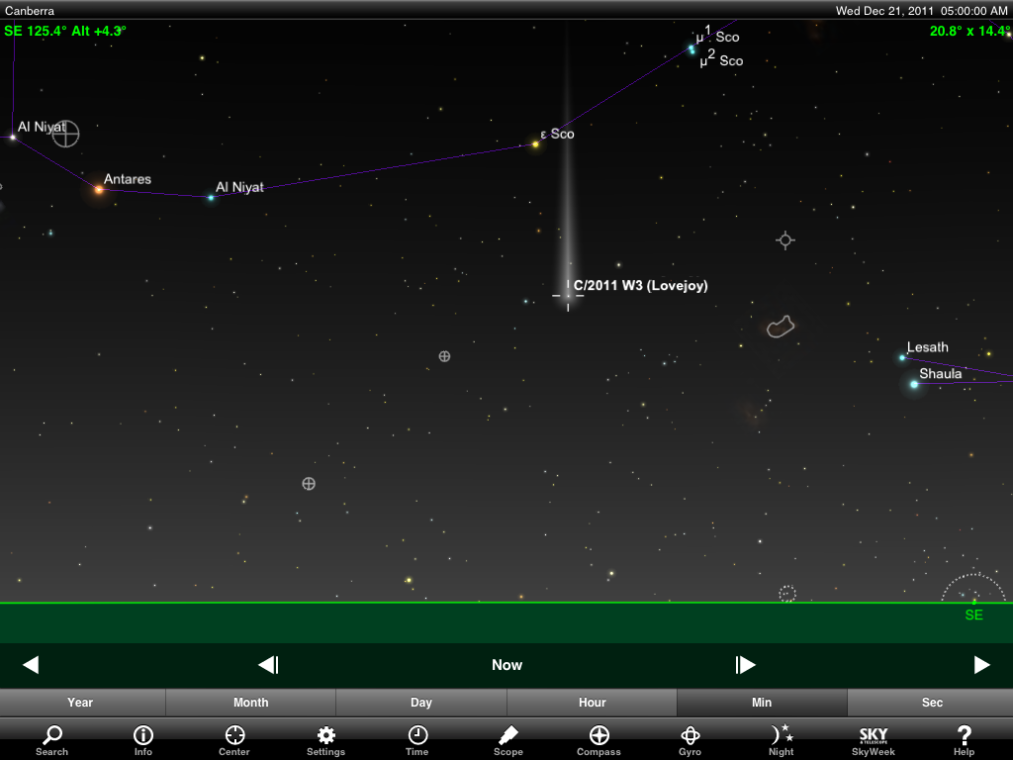This morning in New Zealand, Minoru Yoneto photographed the tail of Comet Lovejoy
Comet Lovejoy plunged into the sun last Friday and it came out on the other side! This has been a weird comet! It must have been huge to survive the heat of the sun. Here is a video of the comet entering the sun: http://science.nasa.gov/media/medialibrary/2011/12/16/comet_whoosh.m4v and here is the video of it leaving the sun: http://science.nasa.gov/media/medialibrary/2011/12/16/lovejoyemerges.m4v
If you notice here it makes a cross in the sky, I know, I know it only does that because of the angle the picture was taken, and it’s digital artifacts from the lens because Lovejoy is so bright, it’s still pretty cool!:
Comet Lovejoy was discovered on December 2, 2011 by Australian Terry Lovejoy, he is an amateur astronomer. I’m sure we’ll hear much more about this in the coming months!
“The motions of the comet material in the sun’s magnetic field are just fascinating,” adds SDO project scientist Dean Pesnell of the Goddard Space Flight Center. “The abrupt changes in direction reminded me of how the solar wind affected the tail of Comet Encke in 2007
http://science.nasa.gov/science-news/science-at-nasa/2011/16dec_cometlovejoy/
Noted astronomer John Bortle urges observers (especially in the southern hemisphere) to “begin searching for Comet Lovejoy’s bright tail projecting up out of the morning twilight beginning at dawn. The tails of some of the major sungrazing comets have been extraordinarily bright. Comet Lovejoy’s apparition has been so bizarre up to this point that it is difficult to anticipate just what might happen next … [including] the exact sort of tail it might unfurl in the morning sky.”
Some comets like it hot!
July 7, 2000 — In October 1965 comet Ikeya-Seki swooped past the Sun barely 450 thousand kilometers above our star’s bubbling, fiery surface. Gas and dust exploded away from the comet’s core as fierce solar radiation vaporized the icy nucleus. Most comets wouldn’t survive passing as close to the Sun as the Moon is to the Earth, but Ikeya-Seki literally came through with flying colors. When the comet emerged from perihelion (closest approach to the Sun) it was so bright that observers on the street with very clear skies could see it during broad daylight if the Sun was hidden behind a house or even an outstretched hand.
http://science.nasa.gov/science-news/science-at-nasa/2000/ast07jul_1/
Want to see if you can see comet Lovejoy? If you are in the Northern Hemisphere you probably won’t be able to see it, but those of you south of the equator, look up early tomorrow morning! Look at the chart below and it will tell you where to look!


